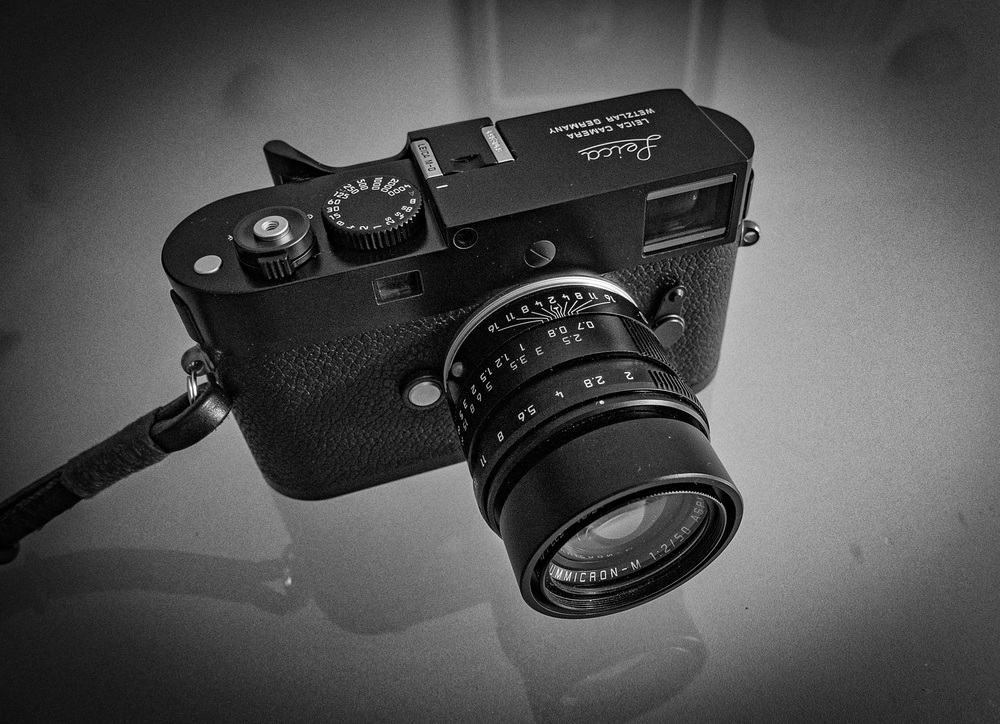
NEW: Review and first impressions of the M-D by Macfilos
The first M-D to arrive in Britain came my way this afternoon, several days earlier than expected. It is one of only two received by Leica’s Mayfair store, the other has gone on display. While I don’t normally go for unboxing features, I’m making an exception for this unusual and rather divisive camera. Judging by some of the comments to yesterday’s announcement, the M-P is going to polarise opinion and will be the butt of Leica haters’ jibes for quite some time. Whatever your views, I already love this camera. So there.
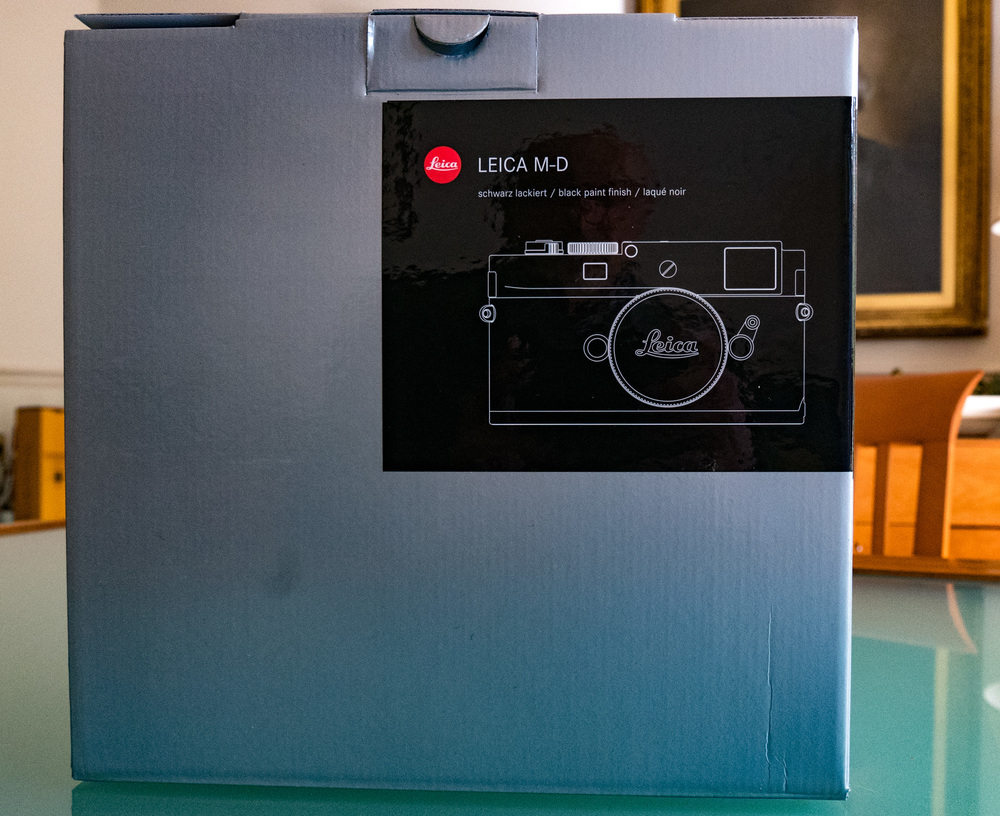
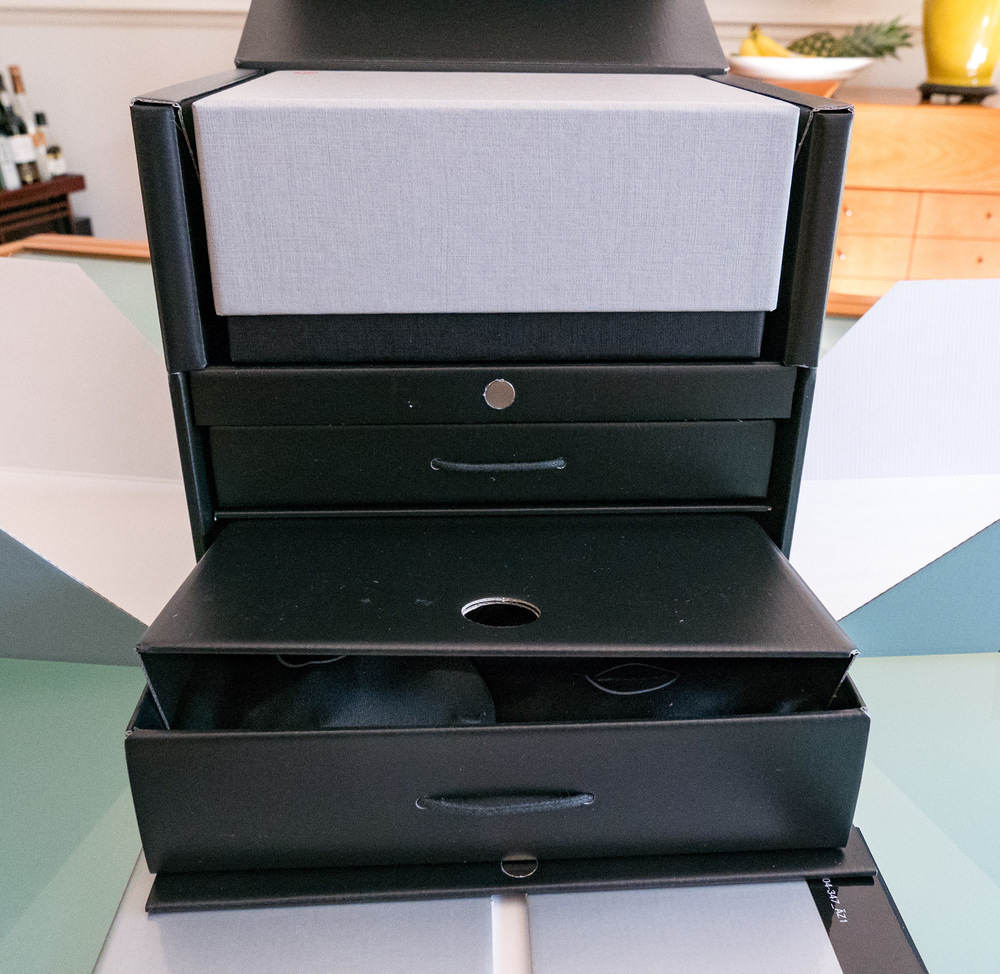
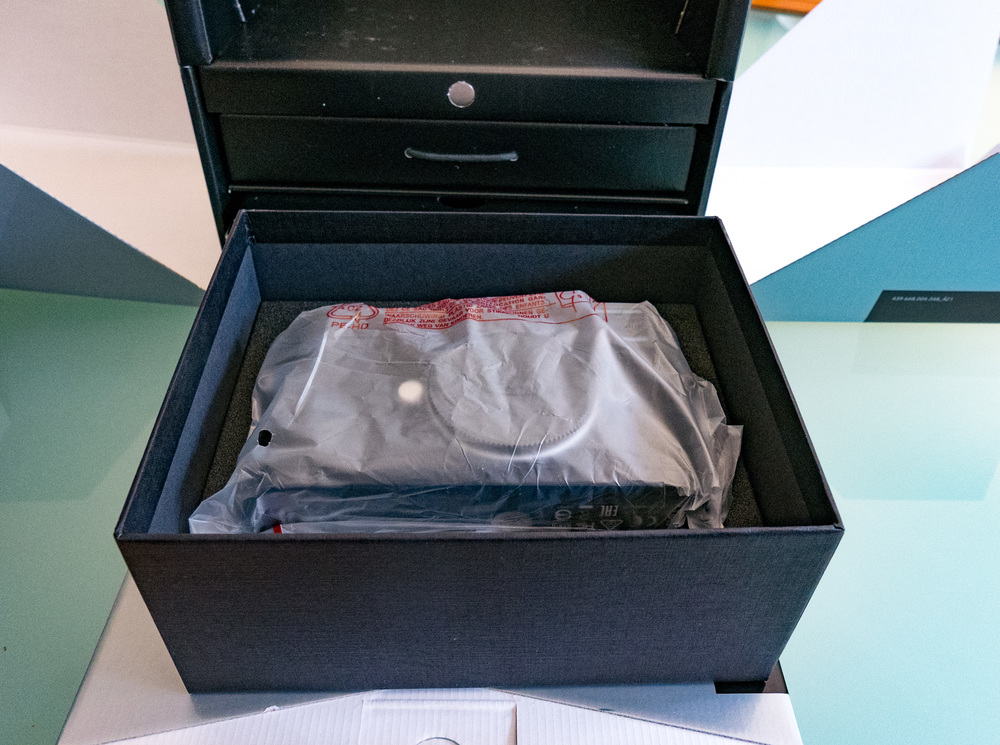
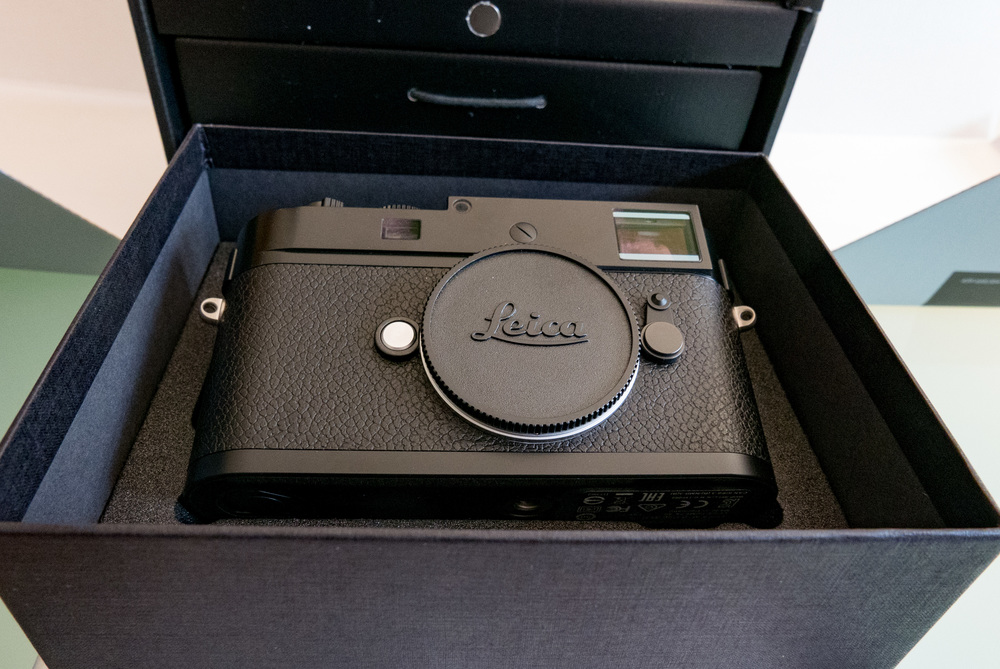
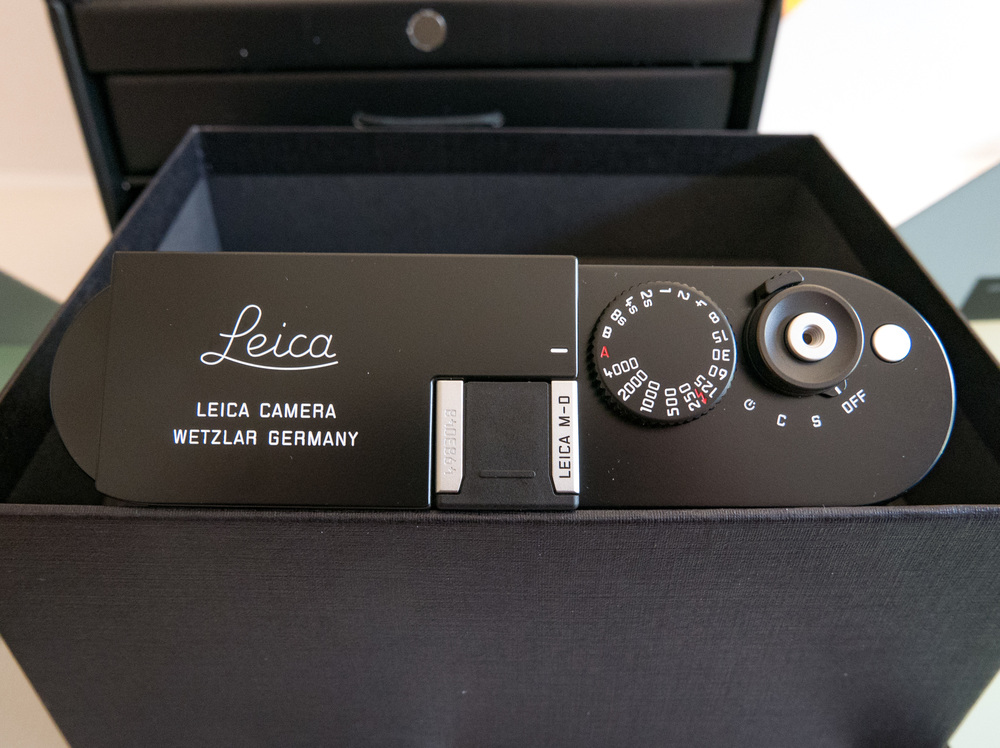
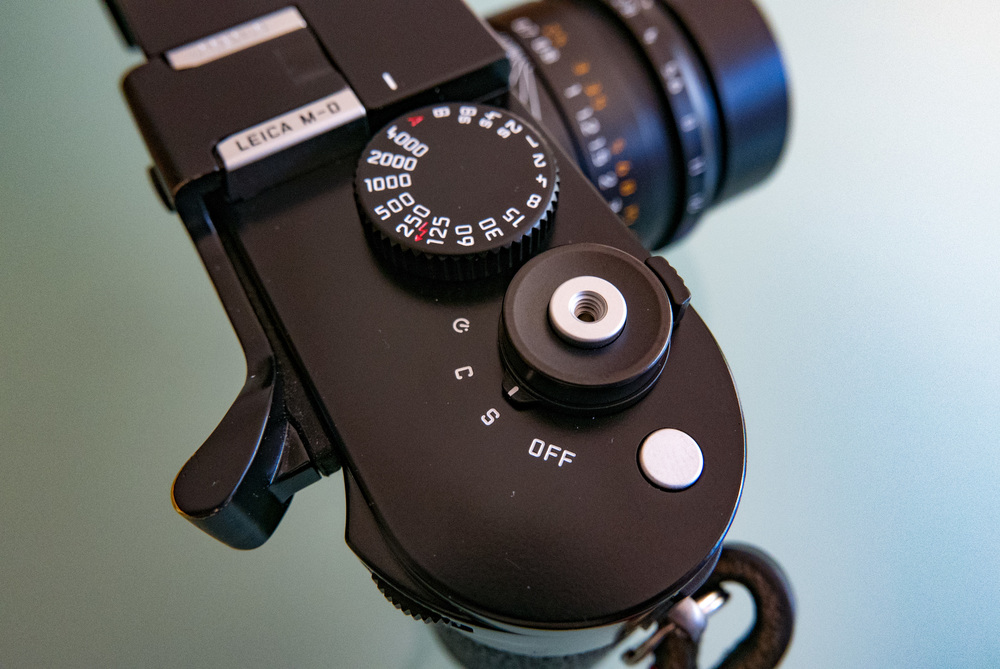
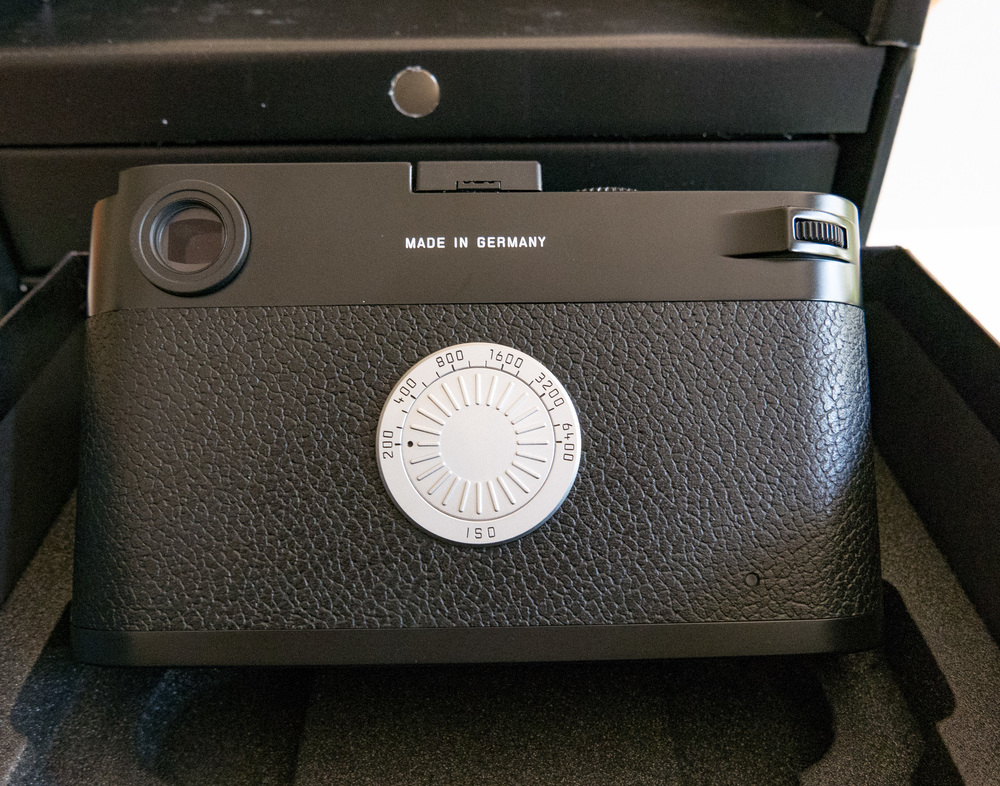
Let’s get the unboxing bit out of the way first. The packaging is bog-standard M, with the camera box on the top shelf of the little cabinet and the two usual drawers below—one for the literature and another for the accessories which include the charger, leather strap (a bonus compared with the M and M-P) and cables.
Now to set up the camera. First, set the date. A quick check of the manual and I discover that a long press of the chrome function button (the video button on the M and M-) brings up a series of digits in the viewfinder. The sequence is year, month, day, hour and minutes. The values are adjusted by means of the rear dial and the move to the next value is made by a short press off the function button. I found the camera already set up on Wetzlar time, so all I needed to do was twiddle the hour backwards. This is simplicity itself.
There are no other settings as far as I can see (other than a similar procedure for firmware updates) and if it is possible, I have yet to find out how to format an SD card. There is no white balance to set, no user profiles, no copyright information. Nix.
Quiet shutter

I slipped in a spare battery and attached a lens before trying the advertised “quiet” shutter. So far I can detect no difference in volume between the M-D and M-P but then neither is what I would call loud. I also couldn’t really hear much difference when I tried the M262 in February. Time will tell on this.
A Gordy wrist strap completes the ensemble and the MP is ready to rock. Tomorrow will be its first outing when Adam Lee and I go for some more film street shots. I plan to pretend the MP is an M7. Adam, of course, will not be convinced.
Before attaching accessories I thought I’d better check the weight. Despite the M9-like stepped chunk out of the brass top plate and the absence of screen and buttons, the M-D contrives to weigh exactly the same as the M-P, a precise 700g. This is about 80g heavier than the earlier M262 but the use of brass for the top plate and bottom cover explains this. I would have thought that the missing screen and buttons would have accounted for more than zero grams but, then, what do I know?
Wizards of Wetzlar
It occurred to me that the Wizards of Wetzlar could have had the last laugh by stuffing screen and associated gubbins back inside the body to fill up the space. I will never know for sure. As you can imagine from this, however, the M-P feels very similar to the M or M-P in terms of handling. With my Match Technical ThumbsUp grip attached, it is just right.
Despite the lack of weight difference there is a perceptible sense of separation between the screened and unscreened cameras. The M-D feels smoother (it is because it ain’t got nothing there) and the right thumb can roam around the entire back without any danger of pushing a button. This is nirvana because I have yet to meet a modern camera that doesn’t play tricks when my wayward digits get to work. The central ISO dial is commendably stiff, just right in my opinion, and there is absolutely no chance of moving it my mistake. It can be operated by one finger, however.
All this taken into account, I notice an immediate improvement in handling over the M-P which is sitting by my side as I write. The M-D feels like a film camera and could almost be mistaken for the M7 which, in reality, is slightly thinner and 70g lighter.
Tomorrow, then, the M-D has its first outing. It will probably be the only M-D to be seen in London. I will have just four things to remember: ISO setting, speed set to A for aperture priority, aperture and focus. What could be simpler, and it’s basically the way I treat all the Ms. I already know from testing the M60 Edition that it will work out just fine. More details will follow, including some test shots (not that you will tell the difference between the M-P and any other M240-series camera).
MORE:
Leica M-A and Leica M-D go out in the noonday sun
Review and first impressions of the Leica M-D
- Subscribe to Macfilos for free updates on articles as they are published. Read more here
- Want to make a comment on this article but having problems? Please read this

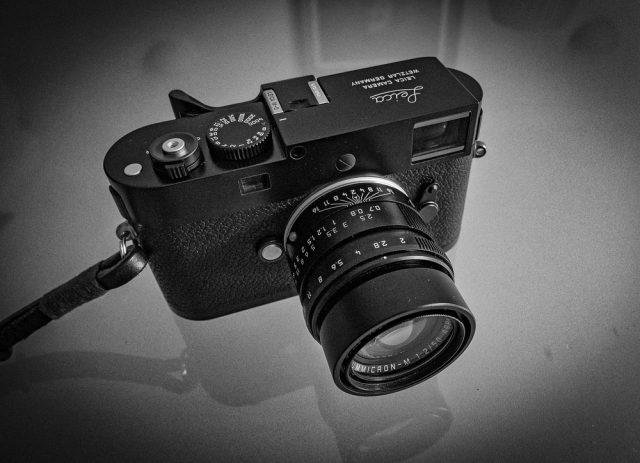




The digital M’s are much too big. What we need is the size of the M4 or M6 camera.
Dear Henry, I don’t think anyone disagrees with that, not even the engineers at Leica. Stefan Daniel himself told me that would be the ultimate objective. However, there is the question of the distance between lens and sensor to consider. Sensors are thicker than film and, with the current state of technology, it probably isn’t possible to reduce with depth to the same as the M3. What I do think should be possible is to reduce the height (but only of the M-D because it doesn’t have to accommodate a screen. On the other hand, it is unlikely Leica would tool up for a special body just for a niche product.
Mike, I recommend that you use the SD Association’s SD Card Formatter (https://www.sdcard.org/downloads/formatter_4/) to format your cards rather than Disk Utility. It formats the card to the official standard. I read that some of the repeatable issues with the M software hanging have come down to the camera’s own card formatting, and this was solved by formatting with the SD Association’s own software.
Brett
Thanks for mentioning this. You are absolutely right. I tried to download this utility on Friday but for some reason the site was down, hence I had to resort to Disk Utility. I had the Association’s utility on a previous computer and agree it works well. It is also much safer because Disk Utility can be extremely dangerous if you don’t take great care to ensure you are formatting the correct target!
This morning I was able to download the SD Card Formatter software from the SD Association as outlined by Brett in his earlier comment. This is very straightforward and is much preferable to using Disk Utility as I originally suggested. In the utility you have the option to format without destroying content or to perform a deep format to ender any files irrecoverable. This is similar to the options found in most digital cameras.
One last thing Mike, would you mind posting some photos of the view through the viewfinder? Very curious about that too, since it’s the only interface the camera has!
I will have a go at getting some shots although, frankly, the viewfinder looks much the same as the M (although white only). All the functions are displayed using the same red digits that we see in the M, usually reserved for shutter speed. A brief press of the function button on the top plate toggles 1) frames left [which seems to be a maximum of 999, so I never saw it move down during the day] and battery percentage, just shown as a figure (100, 70, etc). A longer press on the function button brings up the exposure compensation which is adjusted using the rear dial. Really very simple.
I love how so few people ‘get’ this camera. Aside from the simplicity of focusing on the very basic (it does change how and what you shoot!), for me the point that nobody has yet made is: with the exception of the sensor, this camera will obsolete very slowly indeed!
When Leica Q owners are playing catch-up with the latest EVFs and autofocus mechanisms, this camera will solidly be as good as it will ever be, for a long time to come.
The longevity of this model is something I did touch on. In fact, I suggested in a Facebook message to Dr. Kaufmann that they ought to consider a sensor/processor upgrade programme so owners can keep their favourite Leica and have the latest (basic) electronics fitted. I think that would be very popular.
Red Dot have one demo, and one in stock. Had a play first thing this morning…..and I like it.
They might not have the stock one for long!
Can’t wait to get my SD card home. Oh, the anticipation.
I noted in your image of the back of your camera there is not a monitor sensor below the wording "Made in Germany." Makes sense as there is no monitor on the camera. On the Leica site all their images show a body with a monitor sensor. See https://us.leica-camera.com/Photography/Leica-M/Leica-M-D/Details
The M-D instruction manual does not show a sensor. Interesting…
Very interesting and I hadn’t noticed this. I know there have been prototypes going the rounds and this must have been one of them.
Have fun! Looking forward to your thoughts once you get a few hundred photos on the camera.
What is the purpose of the rear thumb dial / function button besides setting the date? Does it do anything else? If the camera is supposed to be stripped down, why does such a dial / button exist in the first place?
The thumb dial also handles exposure compensation. I haven’t tried it yet but you press the function button and then turn the dial. I’ll be trying it later. I don’t think it has any other function but setting the date is vital and I cannot imagine how it could be done without this small nod towards modernity. Incidentally, the other significant omission is SD card format. It’s not a big problem (certainly not a deal breaker) but it is a first for a digital camera.
Sorry Mike, how do you format Sd card ???
Hi Fabio, I had his problem last evening and I am fairly sure there is no way of doing it in camera. You can format on a computer using Disk Utility on a Mac (not sure about Windows). I selected the SD card (be very careful not to select another disk, make absolutely sure) and then ERASE. In the next box enter a name, for instance Leica M-D, select ExFAT and Master Boot Record. This should work. The camera adds the necessary folders when you insert the card. If it is a new card just put it in the camera.
I think it is a good idea to delete files from the SD card while it is still in the computer rather than, as I have been in he habit, simply reformatting the card regularly. Probably a good idea to keep one or two cards specifically for the M-D.
I hope this helps. We are all learning.
Your worst grammatical nightmare is about to ensue. I CANNOT WAIT TO SEE THIS CAMERA!!!
My M-D is now wearing a 1963 Rigid Summicron and looks fantastic. No one would think it was a digital…. Patience!
Mine is wearing a 1937 carl Zeiss Jena 5cm f/1.5 Sonnar, uncoated of course.
Sounds like a good combinatjon. I used the original f/5.6 Summaron for a time and loved it.
Mike,
congratulations, you’re in for an enduring treat.
John
Wow! What a beauty!!
I’ll be calling my local dealer tomorrow to find out what deal he can give me (M240 + X Vario)… 🙂
One question though: is it possible to use uncoded lenses?
cheers, Nico
Now that’s a very interesting question. It occurred to me this evening when I considered mounting my 1963 rigid Summicron but worried that there might be some problem. I will ask on Tuesday when the Leica guys get back to work.
Congratulations Mike, I sort of envy you, ’tis a beautiful thing.
On uncoded lenses, I may be wrong but if the M-D only records DNG’s, I would have thought that this was not an issue, as you sort this out in PP?
Maybe not?
I suspect you may be right. After all, the camera knows the focal length in order to adjust the framelines and, as you say, it is possible to sort out any unlikely problems in PP. In any event, I don’t anticipate any problems with focal lengths over 35mm.
I see no reason why the lens shouldn’t work but unless it is is 6-bit coded there is no way that the camera can be set up manually. Personally I think it would have been an idea for leica to have made the camera so that it could be connected to a computer/smart phone and certain parameters could be set this way
I am assuming that the lens profiles on the M models are mainly aimed at in-camera jpeg processing so, with RAW only this shouldn’t be a problem. You make a good point about external configurability. The is an electronic port on the base of the camera (same as on 249 and 262) which normally serves the multi-function handgrip. I wonder if it could be adapted?
Today is my first outing with he M-D and I should know more about it this evening.
Crikey Mike, that was quick work! I was hoping that one might have arrived in Old St so that I could have a fondle when ‘on duty’ tomorrow.
Look forward to hearing more, but despite my initial misgivings (mainly over price) I feel the gravitational pull…..and no need to wipe the greasy marks off the screen either!
Regards
John
Just a question of being in the right place at the right time! I love this camera already. It makes a perfect companion for the SL. M-P on the way to Red Dot also…
You lucky bugger! It looks great, looking forward to seeing the first pictures you take with it.
Yes, very appropriate. I’d better not tell you what I had to do to get it…..
Ha ha. Don’t tell me where you’re going tomorrow either or I might have to buy a balaclava!